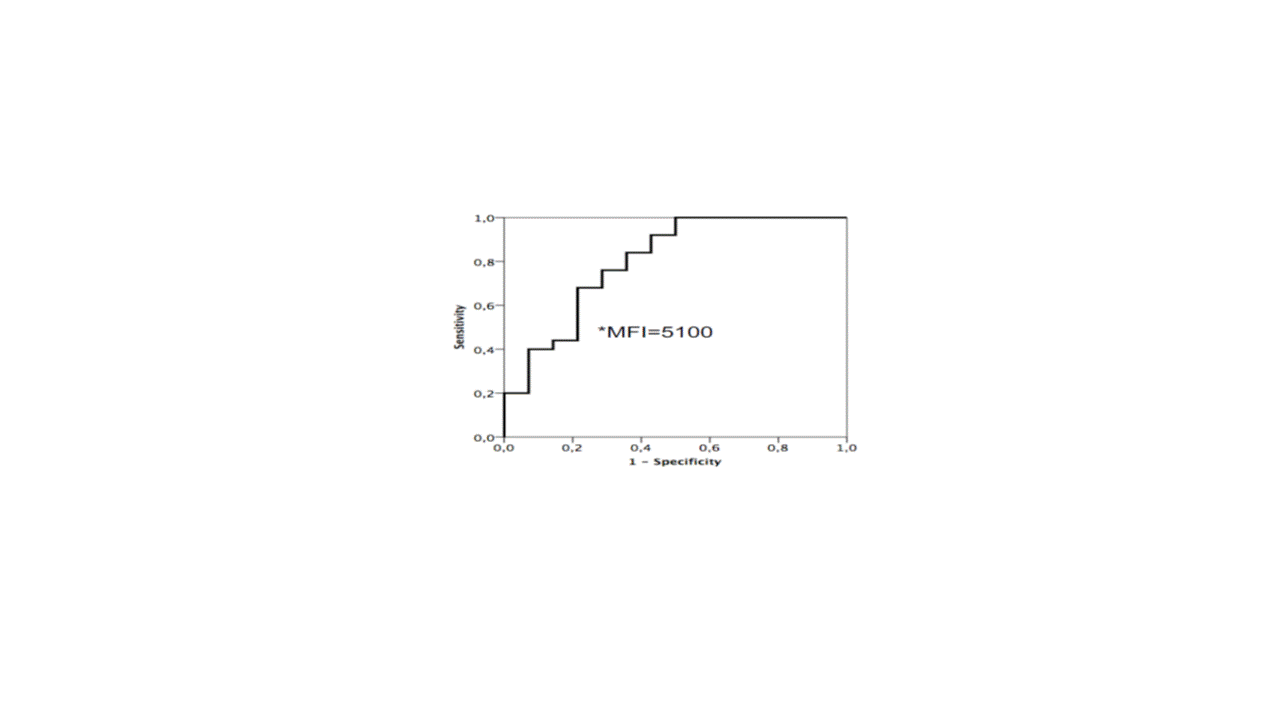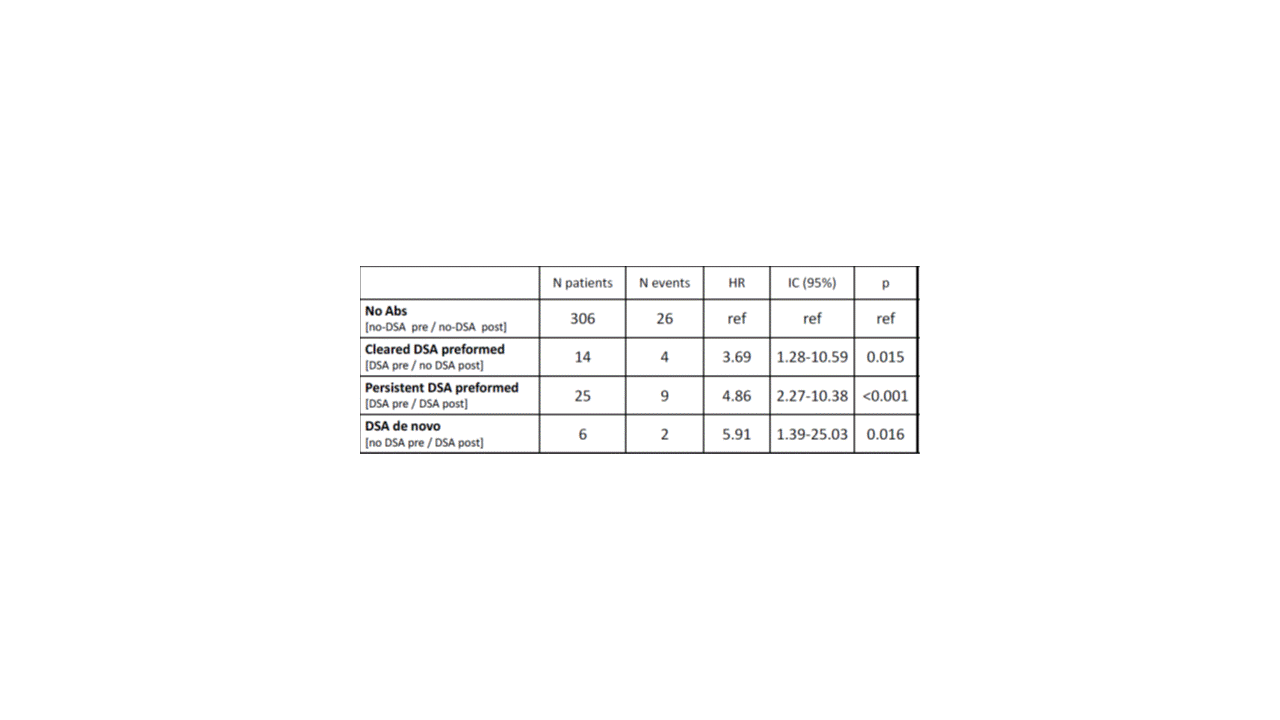Preformed HLA Donor-Specific Antibodies Disappearance After Kidney Transplantation: Significance and Comparison with Persistent DSA.
1Nephrology Department, Hospital del Mar, Barcelona, Spain
2Laboratori de Referència de Catalunya, Barcelona, Spain
3IMIM, Barcelona, Spain
Meeting: 2017 American Transplant Congress
Abstract number: B76
Keywords: Antibodies, Kidney transplantation
Session Information
Session Name: Poster Session B: Antibody Mediated Rejection in Kidney Transplant Recipients II
Session Type: Poster Session
Date: Sunday, April 30, 2017
Session Time: 6:00pm-7:00pm
 Presentation Time: 6:00pm-7:00pm
Presentation Time: 6:00pm-7:00pm
Location: Hall D1
The presence of donor-specific antibodies (DSA) increase the risk of antibody-mediated rejection (ABMR) and graft failure in kidney transplant recipients (KTR). We aimed to analyze the evolution of preformed DSA after KT and their impact on graft survival.
A prospective study was conducted in 370 KT recipients. DSA were assessed at baseline, 1-3-5 years after KT by Luminex® platform, considering a MFI>1000 as positive.
The 39 KTR (10.6%) who had preformed DSA (17 class-I/I&II and 22 class-II) presented with lower acute-ABMR-free survival [HR 10.6 (95% CI 5.5-20.4);p<0.001] and lower graft loss-free survival [HR 2.5 (1.3-4.7);p=0.003] than patients without antibodies. Early acute ABMR was more frequent among patients with preformed DSA class-I or I&II than class II alone (29.4% vs 4.5%, p=0.02). All patients with DSA class-I/I&II and acute ABMR lost their grafts but none of DSA class-II alone. At 1 year post-KT, 20 (58.8%) patients had persistent DSA. Preformed DSA class-II alone persisted more frequently than class-I/I&II [66.7% vs 33.3%; p=0.031]. The only risk factor associated with the persistence of DSA was pre-KT MFI [OR 1.01(1,001-1,010); p=0.023]. ROC Curve for MFI=5100 showed AUC 0.803(p=0.002)(Fig).
Although in our overall population the highest risk of graft loss was found in patients with de novo DSA, graft loss was also very significant in KT recipients with either persistent preformed DSA or those who cleared preformed DSA during follow-up(Fig).
Preformed low-MFI DSA usually disappear after KT. They are deleterious to graft survival, and the risk does not decrease significantly after post-KT DSA clearing.

CITATION INFORMATION: Redondo D, Pérez-Sáez M, Mir M, Gimeno J, García C, Hernández J, Yélamos J, Pascual J, Crespo M. Preformed HLA Donor-Specific Antibodies Disappearance After Kidney Transplantation: Significance and Comparison with Persistent DSA. Am J Transplant. 2017;17 (suppl 3).
To cite this abstract in AMA style:
Redondo D, Pérez-Sáez M, Mir M, Gimeno J, García C, Hernández J, Yélamos J, Pascual J, Crespo M. Preformed HLA Donor-Specific Antibodies Disappearance After Kidney Transplantation: Significance and Comparison with Persistent DSA. [abstract]. Am J Transplant. 2017; 17 (suppl 3). https://atcmeetingabstracts.com/abstract/preformed-hla-donor-specific-antibodies-disappearance-after-kidney-transplantation-significance-and-comparison-with-persistent-dsa/. Accessed December 25, 2025.« Back to 2017 American Transplant Congress
